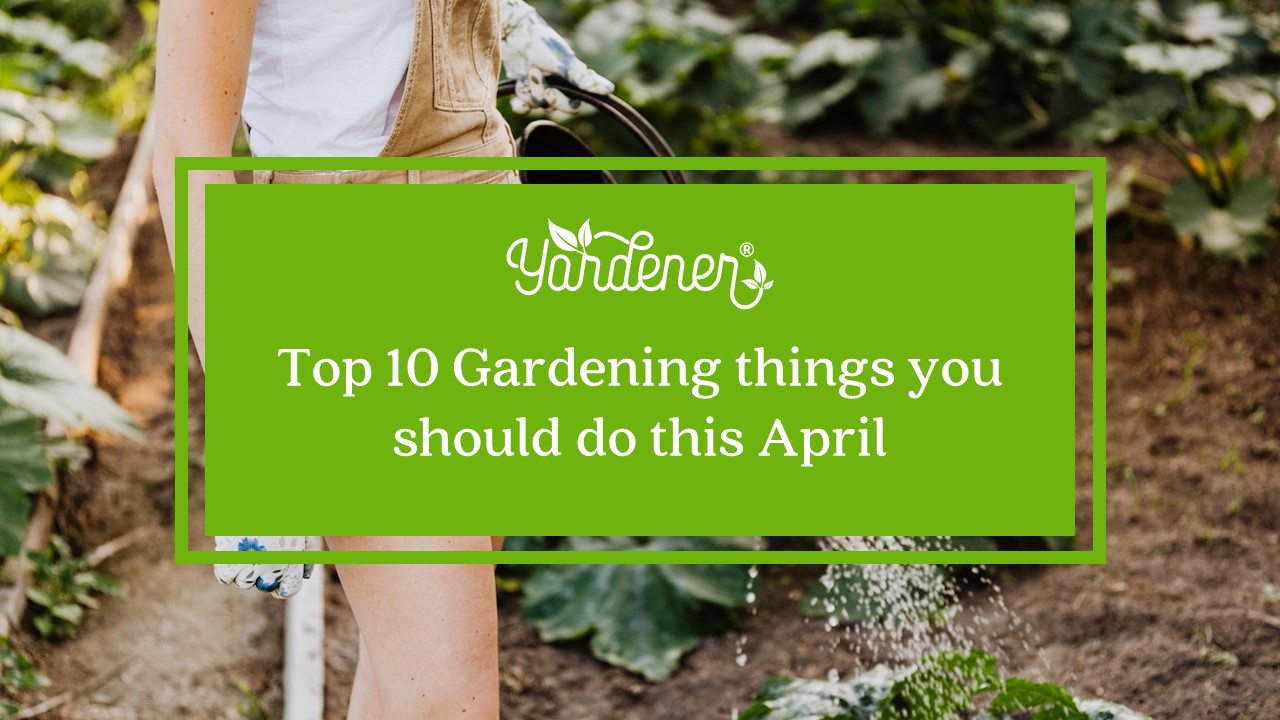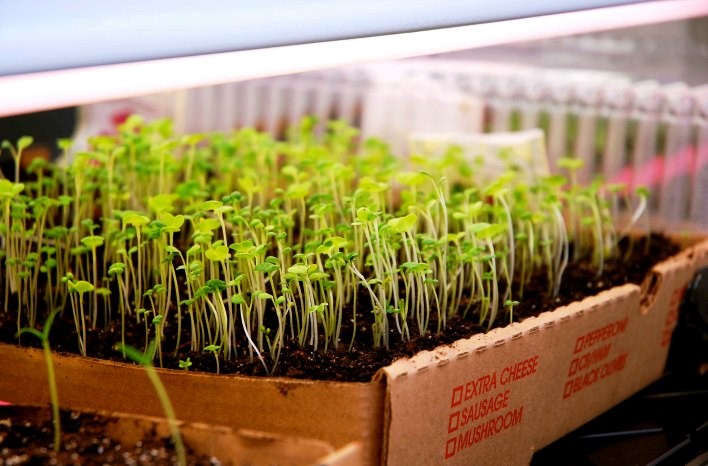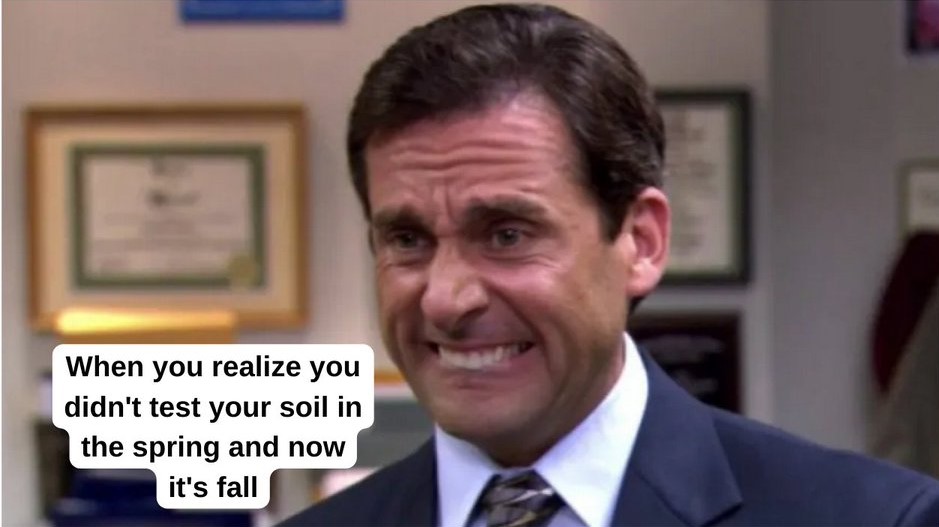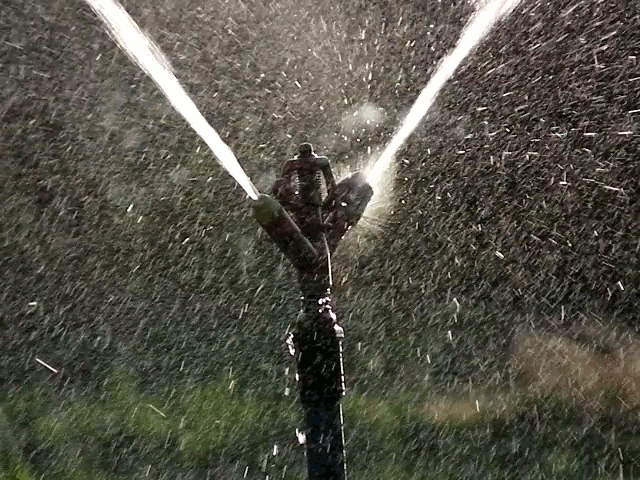
"When the April wind wakes the call for the soil, I hold the plough as my only hold upon the earth, and, as I follow through the fresh and fragrant furrow, I am planted with every foot-step, growing, budding, blooming into a spirit of spring."
- Dallas Lore Sharp
1. Start your vegetable garden
Starting your vegetable garden and growing your own fresh food is ideal in April as April is the perfect month to start. You may take advantage of a plentiful supply of homegrown veggies throughout the summer and fall with the correct planning and preparation.
Normally, you can plant the following in April:
- Lettuce
- Peas
- Radishes
- Carrots
- Shallots
- Cabbage
- Broccoli
- Beets
- Spinach
- Pansies
Check April Vegetable Garden Zone-by-Zone article for your reference.
Note: According to your particular area and environment, there may be a difference in the precise list of veggies that can be planted in April. For detailed advice, it's always a good idea to speak with a nearby gardening specialist or extension organization.
2. Feed your lawn
Feeding your lawn in April is critical to keeping it lush and healthy all year. The winter months can be hard on your grass, and April is the ideal time to replenish its nutrients. Fertilizing your lawn in April will encourage healthy growth and keep your grass green and strong throughout the season.
Read more about April Lawn Care Tips here.
Here’s a short video you can check out:
3. Plant summer bulbs
If you want to add some beautiful blooms to your garden this summer, planting summer bulbs in April is the way to go. These bulbs will give you a variety of colors and textures to enjoy all season long, and are easy to plant and care for. Plant summer-flowering bulbs such as dahlias, lilies, and gladiolus for a beautiful and colorful garden in the summer.
Here is a Summer-Flowering Bulbs Chart for your help.
4. Start seeds indoors

Image credit: https://joegardener.com
Start seeds indoors to get a head start on your spring and summer gardens. Starting seeds indoors can give you more control over the growing process and ensure that your plants are healthy and strong when it's time to transplant them outside, whether you want to grow your own vegetables, herbs, or flowers.
Step 1: Moisten the soil
Fill a large bowl with seed-starting mix and add a little water to evenly moisten the soil. It's a good idea to wear a face mask as this soil can be very fine and may irritate your airways.
Step 2: Fill the cells
Place your seed tray inside the drip tray and fill each cell with soil, leaving a small gap at the top.
Step 3: Sow your seeds
Sow your seeds according to the instructions on the packet. If the seeds are small, like lettuce or arugula seeds, sprinkle just a few over the soil. For larger seeds, like pumpkin or nasturtium seeds, you can place 2 seeds in each cell (one as a backup in case one doesn't germinate). Cover the seeds with a little soil and mist until the surface is damp. As a rule of thumb, plant the seed to the same depth as its thickness.
Step 4: Cover and label
Cover the tray and place it under your lights on a heat mat. Don't forget to label your plants so you know what's growing where. With these simple steps, you'll be on your way to growing healthy, strong seedlings for your garden.
5. Protect plants from frost
As the weather begins to warm up in April, keep in mind that frost is still a possibility. Frost can harm or kill tender plants and seedlings, so precautions must be taken to protect them. Covering plants with a lightweight fabric or blanket is one way to protect them from frost. Another option is to water the soil around the plants in advance of a frost. As the soil freezes, the moisture in it releases heat, keeping the plants slightly warmer. By taking these frost-protection precautions, you can ensure that your plants thrive and continue to grow throughout the spring season.
The Planket looks to have a very good user review you can check.
6. Test your soil
Spring has arrived, and it is time to get our hands dirty in the garden. But, before we begin planting, let's talk about something very important: soil testing! I know it doesn't sound like the most exciting thing in the world, but trust me when I say it's a game changer for your plants. Consider it a health check for your soil. You can learn a lot about your soil by testing it, such as its pH level and nutrient content. It's like discovering your soil's personality! Once you've determined what your soil requires, you can rejuvenate it and transform it into the ideal environment for your prized plants.

Source: Image collected
7. Plant herbs
April is the ideal month to begin growing herbs in your garden, whether you're a foodie or you just want to add fresh tastes to your meals. They not only give a burst of flavor to any dish but are also simple to cultivate and require little upkeep. According to acclaimed chef and food writer Jamie Oliver, herbs are a wonderful complement to any garden. They are a flexible element that may significantly improve the flavor of your cuisine.
The most well-liked herbs to grow in April are thyme, mint, chives, parsley, and basil. They not only taste great, but they also provide a lot of health advantages. Herbs are a terrific supplement to a healthy diet since they are loaded with minerals and antioxidants, according to integrative medicine doctor Dr. Julie Chen "They can help with everything from digestion to reducing inflammation in the body." Herbs are a great way to start your garden and give you a head start on other plants. Choose a sunny spot and well-draining soil, and don't be afraid to experiment in the kitchen.

8. Water wisely
It is important to water your garden and grass properly to encourage strong root development and preserve water. Deep watering drives root growth deeper into the soil, which increases drought resistance and makes it simpler for the plant to get water and nutrients. Watering in the early morning or late evening when it's cooler and there's less wind minimizes water loss due to evaporation.

It is important to consider how much water your grass and garden truly require and to water the soil until it is damp to a depth of several inches, wait for the top layer of soil to dry out, and then water again. Effective watering techniques like soaker hoses or drip irrigation can provide water straight to the roots, which not only aids in water conservation but also lowers the risk of illnesses associated with water and improves overall plant health. By adhering to these suggestions, you can guarantee that your landscape grows while conserving water and resources.
Read more about Water Wisely here.
9. Protect your plants from pests

Keeping an eye on your plants is an essential part of gardening, and checking regularly for pests is no exception. Pests like aphids and caterpillars can quickly wreak havoc on your plants, causing damage and even death if left untreated. There are many natural methods to control pests, such as insecticidal soap and companion plants. Insecticidal soap can kill soft-bodied pests by disrupting their cell membranes, while companion plants have natural pest-repelling properties and can help protect other plants from infestation.
If pests are found, it is important to act quickly and physically remove them by hand or using a strong stream of water.
By staying vigilant and using natural methods, you can keep your garden healthy and thriving without the need for harmful chemicals, and you'll be doing your part to support a healthy ecosystem and protect the environment.
10. Plan for summer
And finally, start making preparations for your summer garden by deciding the plants you want to cultivate, compiling a list of the materials you'll need, and scheduling your plantings.
Put on your gardening gloves, people! We're ready to embark on a summer filled with flowering beauty and delectable crops! When you have a garden to take care of, who needs the gym? Let's start digging and see how those green fingers develop!
Bonus:
View this blog as a presentation and here we have an Infographic as well that you can embed into your posts, and blogs.
Read more blogs at www.yardener.com blog section.

